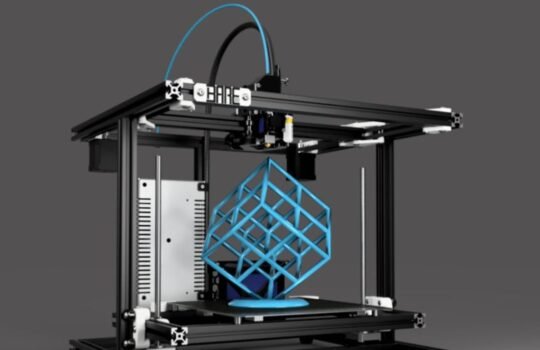In a world facing environmental challenges and growing demand for ethical practices, fashion is transforming. One of the most innovative tools supporting this shift is 3D printing. By enabling on-demand production, reducing material waste, and allowing complete customization, 3D printing is redefining what it means to create fashion sustainably.
So, how does this technology contribute to sustainable fashion design? Let’s explore the key benefits.
What is 3D Printing in Fashion Design?
3D printing, or additive manufacturing, creates objects by layering materials based on a digital model. In fashion, this allows direct creation of garments, shoes, and accessories without cutting, stitching, or wasting material. Designers commonly use:
- PLA (Polylactic Acid): A biodegradable filament derived from corn starch or sugarcane
- TPU (Thermoplastic Polyurethane): Flexible and strong, ideal for wearables
- Recycled polymers: Made from post-consumer plastic waste, contributing to a circular economy
Technologies like FDM, SLS, and SLA are tailored to meet the physical and aesthetic requirements of fashion pieces. This innovation enables both complex design freedom and reduced environmental impact.
Waste Reduction and On-Demand Manufacturing
Traditional manufacturing in fashion leads to significant waste due to off-cuts, sample production, and overstocked inventory. In contrast, 3D printing eliminates many of these issues.
- Zero-waste production: Garments and components are printed exactly to shape with no excess
- On-demand manufacturing: Products can be printed only when ordered, avoiding mass overproduction
- Digital prototyping: Designers can test and modify virtual versions before physical production, reducing the need for physical samples
This streamlined approach results in far less waste, making it ideal for sustainable and small-batch fashion brands.
Sustainable Materials and Circular Design

One of the core environmental benefits of 3D printing is its compatibility with eco-friendly materials. Designers are no longer limited to synthetic plastics or textiles with a high environmental cost.
Materials like biodegradable PLA and recycled PET offer lower environmental footprints. Some innovators are even experimenting with filaments made from algae, food waste, or biopolymers, paving the way for compostable or fully recyclable fashion items.
Moreover, 3D printing supports circularity. Many pieces can be designed to be modular, disassembled, or melted down and reprinted into something new. This encourages longevity and reusability, key aspects of sustainable design thinking.
Creative Freedom and Personalization
3D printing opens up a new world of design possibilities. Complex patterns, textures, and structures that would be impossible or labor-intensive by hand can now be produced efficiently. Customization also becomes more accessible.
- Made-to-measure fashion: Personalized sizes reduce returns and waste
- Unique aesthetic forms: Designers can experiment with geometry and structure without production constraints
- Small-batch runs: Economic feasibility, even with limited quantities, making fashion more exclusive and sustainable
By removing the constraints of traditional mass manufacturing, 3D printing enables creative innovation without compromising sustainability.
Real-World Examples in Action
Leading designers and fashion houses have already embraced 3D printing in their sustainable collections.
- Iris van Herpen integrates intricate 3D printed structures into haute couture, redefining elegance through technology
- Danit Peleg famously created a full 3D printed fashion collection from home, highlighting the accessibility of desktop printing
- ZER Collection leverages 3D printing to develop futuristic and functional fashion with a focus on material responsibility
These examples demonstrate that 3D printing is not just a concept — it’s already influencing how fashion is made and experienced.
Challenges and the Future Ahead

Despite its promise, 3D printing in fashion still faces limitations. Many materials used today are not yet as comfortable or breathable as woven fabrics, making them less ideal for everyday wear. Costs can also be a barrier for small designers, especially when scaling production.
However, ongoing research in material science, soft robotics, and bio-fabrication is rapidly addressing these issues. Shortly, we can expect:
- Smart textiles that adapt to the environment or user behavior
- AI-driven fashion design optimized for material and energy efficiency
- Fully recyclable garments that can be digitally modified and reprinted over time
As the technology matures, its role in fashion will expand beyond innovation into true industry-wide sustainability.
A Smarter, Cleaner Future for Fashion
3D printing is more than just a new way to manufacture clothing. It’s a blueprint for how fashion can evolve to meet sustainability goals. From minimizing waste and enabling personalization to promoting recyclable materials and local production, this technology holds immense potential. As the fashion industry continues to innovate, integrating 3D printing into sustainable design strategies will be essential for those looking to create a cleaner and more conscious future.






